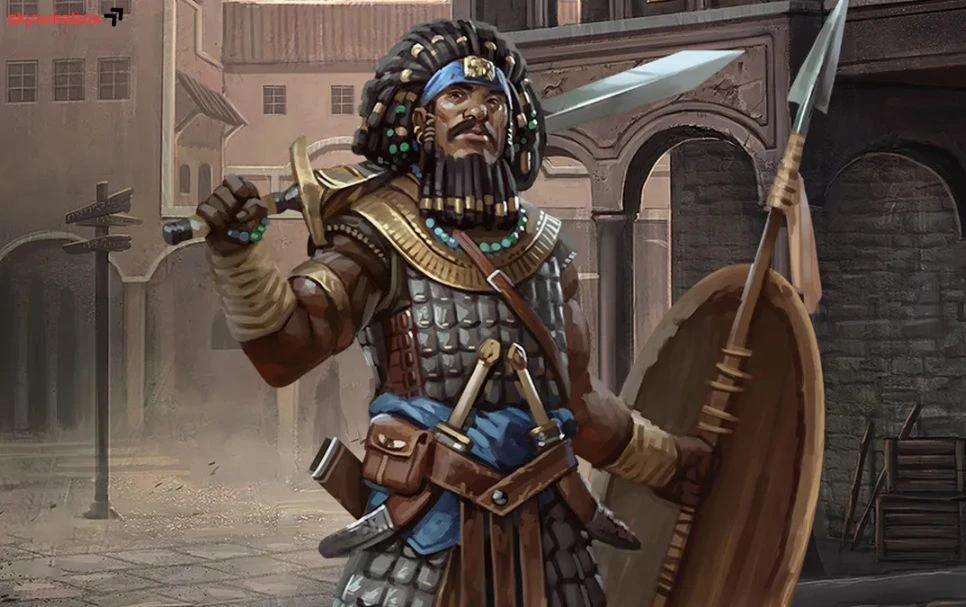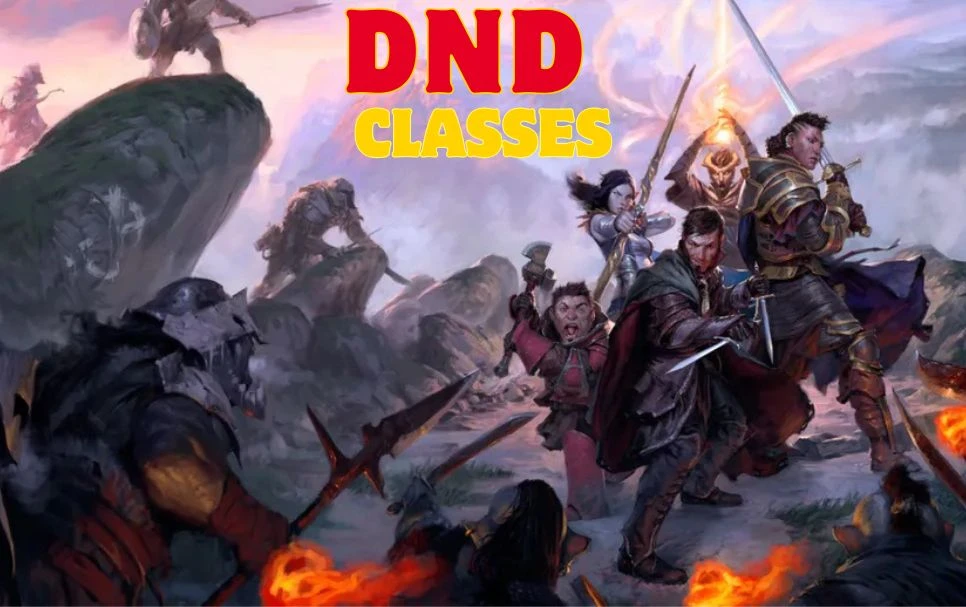Choosing your DnD class is one of the most exciting parts of starting your adventure. Your class shapes your skills, powers, and role in the game.
But with so many options like the fierce Barbarian, the clever Rogue, or the mysterious Wizard, it can be hard to decide which path fits you best. What if you could quickly understand what each class offers and find the one that feels just right for your play style?
This guide breaks down every DnD class in simple terms, helping you pick your perfect match and get ready to dive into your next epic quest. Ready to discover your ideal class? Let’s jump in!
Core Dnd Classes
The Artificer mixes magic with invention to craft powerful tools. Barbarians fight with rage, gaining strength and toughness. Bards use music and magic to inspire or confuse enemies.
Clerics heal with divine power from their gods. Druids connect with nature and can change into animals. Fighters are skilled in many weapons and armor, excelling in battle.
Monk’s martial arts and ki energy to fight swiftly. Paladins serve as holy warriors, combining faith and combat. Rangers know the wilderness well and track foes.
Rogues rely on stealth and deception to strike unseen. Sorcerers have innate magic that flows naturally inside them. Warlocks gain magic from pacts with powerful beings. Wizards study arcane knowledge to cast spells.
Choosing Your Class
Choosing the right class means matching it to your preferred style. Some classes are good at fighting, others at magic or support. Think about what role you want in the group. Do you want to be the tank, the healer, or the damage dealer? Each class fits different team roles.
Balance your desire for combat and storytelling. Some classes shine in battle, others bring more to roleplay. Consider how much complexity you want. Some classes are easy to play, while others need more rules and strategy. Choose one that feels fun and not too hard.
Class Strengths And Weaknesses
Damage Output varies widely across classes. Barbarians and Fighters excel at close combat with high physical damage. Rogues deal strong burst damage using stealth and critical hits. Spellcasters like Wizards and Sorcerers unleash powerful magic attacks, but may have limited physical strength. Bards and Clerics offer moderate damage with spells and weapons.
Survivability depends on armor, health, and abilities. Barbarians have high health and resist damage when raging. Paladins wear heavy armor and heal themselves. Druids can shapeshift to gain new defenses. Squishier classes like Wizards and Sorcerers rely on spells and positioning for survival.
Utility and Support come from skills and spells. Bards and Clerics shine here, providing healing, buffs, and crowd control. Artificers can create magical items that help the party. Rangers offer tracking and survival skills. Monks add mobility and control.
Magic Versatility is strongest in spellcasters. Wizards have the largest spell selection. Druids control nature magic and shapeshifting. Sorcerers have fewer spells but can cast more often. Clerics mix healing and attack spells. Non-spellcasters have limited magical options.
Class Synergies
Combining abilitiesin DnD classes creates strong teamwork effects. Some classes work well together by sharing skills or covering each other’s weaknesses. Multi-classing lets characters gain new powers from two classes. This can make them more flexible in battle or problem-solving.
For example, a Fighter with some Rogue levels can deal more damage and sneak better. A Cleric who takes a few levels of Paladin can heal and fight better in close combat. Choosing the right multi-class paths can improve your character’s role in the party.
Optimizing party composition means picking classes that balance each other. A good group has fighters to protect, spellcasters to control enemies, and healers to keep everyone alive. Mixing classes with different strengths helps the team succeed in many challenges.
| Class Combination | Benefits |
|---|---|
| Fighter + Rogue | High damage, stealth, and defense |
| Cleric + Paladin | Healing, strong defense, and melee attack |
| Druid + Ranger | Nature magic, tracking, and animal forms |
Customizing Your Class
Choosing a subclass helps shape your character’s role and abilities. Each subclass offers unique powers and styles to fit your play style.
Selecting the right feats and skills can improve your character’s strengths. Focus on feats that boost your main abilities or cover your weaknesses.
Your equipment should match your class and strategy. Light armor suits nimble classes, while heavy armor is best for tough fighters.
Spellcasters must pick spells that complement their subclass and role in the party. Balance between offensive, defensive, and utility spells is key.
Playing As A Dungeon Master
Tailoring encounters means making challenges fit each class. Think about what each class does best. Rogues like sneaky traps. Fighters enjoy straight fights. Spellcasters need chances to use magic.
Balancing challenges keeps the game fun. Give strong classes tough fights. Give weaker classes ways to shine. Mix puzzles, combat, and roleplay. This keeps every player involved and happy.
Encouraging roleplay helps players enjoy their class stories. Ask players to act out their class traits. A bard might sing or tell stories. A cleric might pray or heal. This makes the game richer.
Common Class Misconceptions
Many believe some Dnd classes are too powerful. This is not always true. Balance depends on the player’s style and the campaign setting. Every class has strengths and weaknesses. For example, the Wizard has strong spells but less health. The Barbarian is tough but has fewer magic options. Misunderstanding these traits causes the overpowered myth.
Some classes are rarely chosen. Classes like the Artificer or Monk see less play than Fighters or Rogues. This rarity is often due to players’ familiarity or game complexity. Yet, rare classes offer unique skillsand fresh gameplay experiences.
| Class | Popularity | Unique Traits |
|---|---|---|
| Fighter | High | Simple, versatile in combat |
| Wizard | High | Powerful spells, fragile defense |
| Artificer | Low | Magic item creation |
| Monk | Low | Martial arts, ki powers |
Class Evolution Through Editions
The mechanics of DnD classeshave changed a lot through editions. Early versions had simple rules. Later editions added more options and detailed abilities. Classes gained new features like subclasses and custom skills, giving players more ways to play.
The popularity of classes also shifted. Fighters and wizards stayed popular, but others like the bard and rogue grew more loved over time. Some classes became less common as players found new favorites.
New classes were introduced to keep the game fresh. For example, the artificer appeared in newer editions, mixing magic and technology. Each edition tried to balance old and new classes for fun and fairness.

Frequently Asked Questions
What Are The 13 D&D Classes?
The 13 D&D classes are: Barbarian, Bard, Cleric, Druid, Fighter, Monk, Paladin, Ranger, Rogue, Sorcerer, Warlock, Wizard, and Artificer. Each offers unique abilities and playstyles for diverse character creation.
What Is The 27 Rule In D&D?
The 27 rule in D&D suggests rolling four six-sided dice, drop the lowest, and sum the rest for ability scores.
What’s The Strongest Class In D&D 5e?
The strongest D&D 5e class varies by playstyle. Paladins excel in combat and healing, while Wizards offer powerful magic versatility.
What Is The Rarest D&D class To Play?
The rarest D&D class to play is often the Artificer. It combines magic with invention and crafting. Many players prefer traditional classes like Fighter or Wizard. Artificers offer unique gameplay but see less frequent selection in campaigns.
Conclusion
Dungeons & Dragons offers many unique classes to explore. Each class has special skills and roles in the game. Choosing the right class fits your play style best. Whether you like magic, fighting, or stealth, there is one for you.
Understanding each class helps create a fun adventure. Enjoy discovering the strengths and stories behind each option. Your journey in DnD becomes richer with the right class choice. Keep experimenting and find what suits you most.
Visit here for more information and all updates: skywirebox








